
Namco Limited was a Japanese multinational video game and entertainment company, headquartered in Ōta, Tokyo. It held several international branches, including Namco America in Santa Clara, California, Namco Europe in London, Namco Taiwan in Kaohsiung, and Shanghai Namco in mainland China.

Saint Seiya, also known as Saint Seiya: Knights of the Zodiac or simply Knights of the Zodiac, is a Japanese manga series written and illustrated by Masami Kurumada. It was serialized in Shueisha's shōnen manga magazine Weekly Shōnen Jump from 1985 to 1990, with its chapters collected in 28 tankōbon volumes. The story follows five mystical warriors called the Saints who fight wearing sacred sets of armor named "Cloths", the designs of which derive from the various constellations the characters have adopted as their destined guardian symbols. The Saints have sworn to defend the reincarnation of the Olympian goddess Athena in her battle against other gods who want to dominate Earth.

Taiko: Drum Master, also known as Taiko no Tatsujin: Taiko Drum Master in Japan, is a rhythm game developed and published by Namco for the Sony PlayStation 2 as part of the popular Japanese video game franchise Taiko no Tatsujin. It was released in North America in 2004, and Japan in 2005.

Pegasus Seiya, simply known as Seiya, is a fictional character and the main protagonist in the Saint Seiya manga series created by Masami Kurumada. He is the eponymous protagonist who makes his debut in the first chapter "The Saints of Athena", published in Weekly Shōnen Jump magazine on December 12, 1985. Like most of Kurumada's characters, Seiya's design was inspired in the main character of his previous hit manga Ring ni Kakero, Ryuji Takane.

Taiko no Tatsujin is a video game series created by Namco. In the games, players simulate playing a taiko drum in time with music. The series has released games for the arcade and for console and mobile platforms including PlayStation 2, Advanced Pico Beena, PlayStation Portable, Nintendo DS, Wii, Nintendo 3DS, Wii U, PlayStation Vita, PlayStation 4, Nintendo Switch, Xbox One, Xbox Series X/S, Microsoft Windows, iOS, Android and Japanese feature phones.
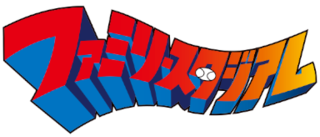
Family Stadium, also known as Pro Yakyū: Family Stadium and Famista, is a series of baseball sports video games initially developed and released by Namco in Japan, and later developed and published by Bandai Namco Entertainment. The first entry in the series, Pro Baseball: Family Stadium, was released for the Nintendo Family Computer in 1986 and later in North America as R.B.I. Baseball, with the series being released on numerous home consoles, the latest being Pro Yakyuu Famista 2020 in 2020 for the Nintendo Switch. The series is considered a precursor to Namco's own World Stadium series of baseball games, released for arcades, PlayStation, and GameCube. The series has been a commercial success since, with over 15 million copies being sold as of 2016.
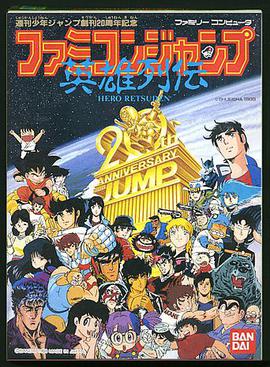
Famicom Jump: Hero Retsuden is a 1989 role-playing video game for the Family Computer (Famicom/NES) published by Bandai. The game commemorates the 20th anniversary of Shueisha's manga anthology Weekly Shōnen Jump.

Osu! is a free-to-play rhythm game primarily developed, published, and created by Dean "peppy" Herbert. Inspired by iNiS' rhythm game Osu! Tatakae! Ouendan, it was written in C# on the .NET Framework, and was released for Microsoft Windows on 16 September 2007. The game has throughout the years been ported to macOS, Linux, Android and iOS.

The Journeyman Project: Pegasus Prime is an adventure computer game developed by Presto Studios and published by Bandai in 1997. It is a complete remake of the original Journeyman Project, using some of the actors from The Journeyman Project 2: Buried in Time.

Star Trigon is a 2002 puzzle arcade game published in Japan by Namco. Ports for iPod, iOS devices and Windows were also released. In the game, the player controls one of three characters — Wataru Hoshi, Chuta Bigbang and Susumu Hori — the objective being to rescue creatures known as "Uchijins" by hopping from planet to planet to draw triangles and capture them. The player will automatically circle the planet they are on, requiring timed jumps to avoid falling off the playfield. It ran on the Namco System 10 hardware.

"Pegasus Fantasy" is a song by Japanese metal band Make-Up. Serving as the band's fourth major release single, "Pegasus Fantasy" and its B-side "Blue Forever" were used as the theme songs for the first half of the original Saint Seiya anime. "Pegasus Fantasy" became Make-Up's most successful release, and they have re-released the song several times since its initial release in 1986. After releasing a "21st century ver." on their mini-album The Voice from Yesterday, Make-Up released a new edition of the song in 2012, subtitled "Version Omega", which features Shoko Nakagawa, the voice actress for Athena, on guest vocals and is used as the opening theme song for the re-imagined Saint Seiya Omega anime. "Pegasus Fantasy Version Omega" reached number 29 on the Oricon's weekly rankings. Masami Kurumada, the author of the Saint Seiya manga, has even included "Pegasus Fantasy" in the manga, with a background character seen singing it. It was appereanced in Taiko no Tatsujin: Drum 'n' Fun!.
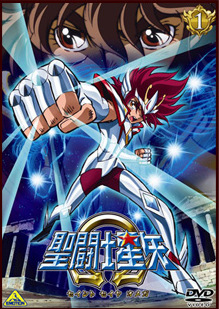
Saint Seiya Omega is an anime series produced by Toei Animation. It is a spin-off of the Saint Seiya anime series written and illustrated by Masami Kurumada, produced in commemoration of the 25th anniversary of the franchise. The series began broadcasting in Japan on TV Asahi on April 1, 2012.
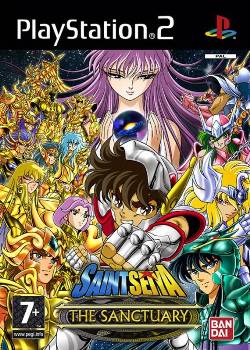
Saint Seiya: The Sanctuary, also known as Saint Seiya: Chapter Sanctuary, is a 3D action video game for the PlayStation 2 console based on the Saint Seiya manga series by Masami Kurumada. It was developed by Dimps Corporation and published by Bandai. It was originally released in Japan on April 7, 2005, and in Europe on June 30, 2005. The European release includes translations into English, Italian, French, German and Spanish.

The Idolmaster Must Songs Presented by Taiko no Tatsujin is a PlayStation Vita rhythm game, released by Bandai Namco Entertainment on December 10, 2015. Though a title of The Idolmaster series, its game system is drawn from Taiko no Tatsujin. Must Songs was released in two versions, each featuring different music: Aka-ban and Ao-ban. Aka-ban features earlier music in the original The Idolmaster series, and Ao-ban features music from the 2nd Vision games; both versions contain 40 songs. The game received a score of 32 out of 40 from the Japanese video game magazine Famitsu.

Paon DP Co., Ltd. (株式会社パオン・ディーピー) is a Japanese video game developer. The company was founded in August 2004 as DP Inc. and merged with Paon Corporation, Ltd. in March 2015 to form Paon DP.
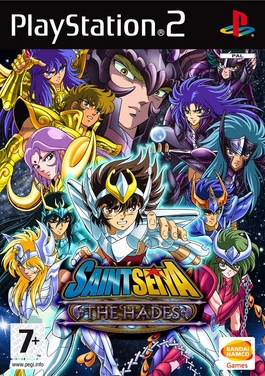
Saint Seiya: The Hades is a three-dimensional fighting video game developed by Dimps and published by Bandai for PlayStation 2. Released on September 29, 2006, in France and December 20, 2007, in Japan, it is the seventh video game based on the Saint Seiya franchise, a manga series written by Masami Kurumada.















